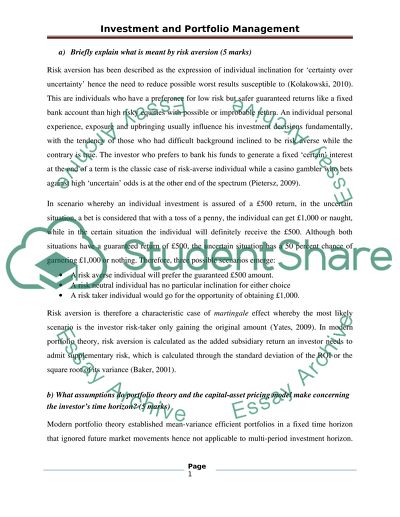Cite this document
(Investment and Portfolio Management Assignment Example | Topics and Well Written Essays - 3000 words, n.d.)
Investment and Portfolio Management Assignment Example | Topics and Well Written Essays - 3000 words. Retrieved from https://studentshare.org/finance-accounting/1565105-investment-and-portfolio-management
Investment and Portfolio Management Assignment Example | Topics and Well Written Essays - 3000 words. Retrieved from https://studentshare.org/finance-accounting/1565105-investment-and-portfolio-management
(Investment and Portfolio Management Assignment Example | Topics and Well Written Essays - 3000 Words)
Investment and Portfolio Management Assignment Example | Topics and Well Written Essays - 3000 Words. https://studentshare.org/finance-accounting/1565105-investment-and-portfolio-management.
Investment and Portfolio Management Assignment Example | Topics and Well Written Essays - 3000 Words. https://studentshare.org/finance-accounting/1565105-investment-and-portfolio-management.
“Investment and Portfolio Management Assignment Example | Topics and Well Written Essays - 3000 Words”, n.d. https://studentshare.org/finance-accounting/1565105-investment-and-portfolio-management.


